Havanese Teething FAQs: Essential Guide for Puppy Owners
Teething is a natural part of a puppy’s development, and Havanese puppies are no exception. As their baby teeth make way for adult teeth, you may be filled with questions and concerns about how to best support your furry friend during this period. This article aims to address some of the most frequently asked questions about Havanese teething and provide helpful tips to ease their discomfort.
Havanese puppies, known for their affectionate and loyal nature, typically start teething around three to four months of age. This process can last until they are about six to eight months old. During this time, it’s important for pet owners to familiarize themselves with the signs of teething, such as excessive drooling, chewing, irritability, and even a decrease in appetite.
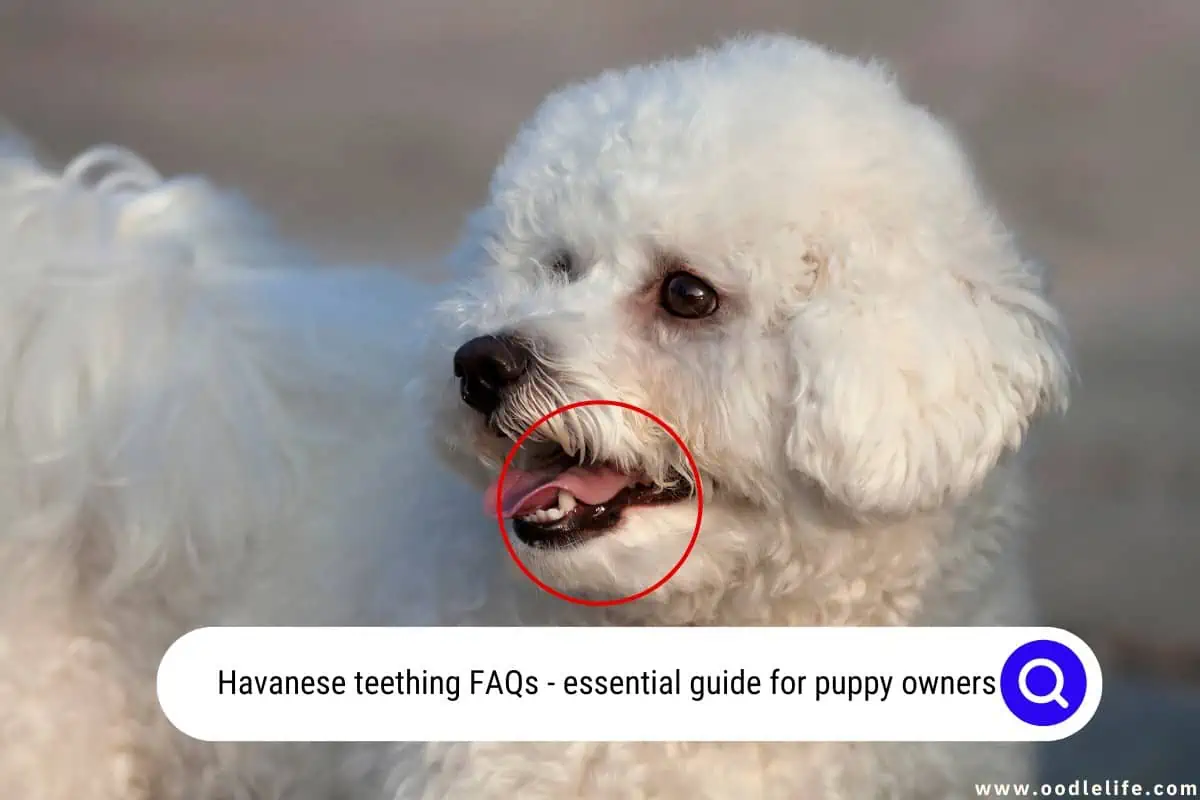
Armed with this knowledge, you can better assist your puppy through this potentially challenging time.
Don’t worry if you’re new to the world of Havanese puppy teething – we’re here to help! Throughout this article, we’ll dive into the most common questions and concerns, offering wisdom backed by experience and expert knowledge. From strategies for soothing sore gums to selecting the best teething toys, this guide will be your go-to resource for navigating the teething stage like a pro.
So, let’s embark on this journey together, ensuring a happy, healthy, and comfortable experience for both you and your beloved Havanese pup.
Havanese Teething Basics
Havanese puppies are no exception to the world of teething. Their little chompers go through a process just like any other breed, so sit back, relax, and let us explore the world of Havaneses and their little baby teeth.
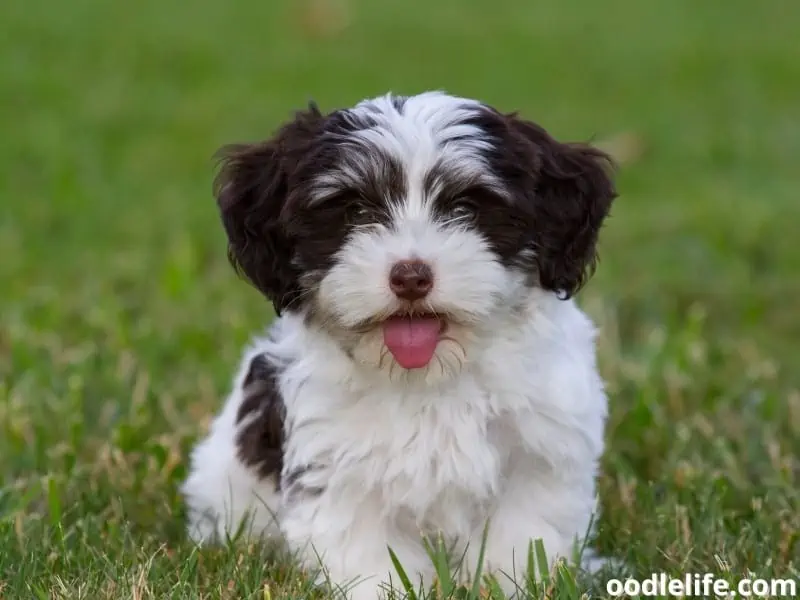
In their first few months of life, Havanese pups develop deciduous teeth, also known as baby teeth. Around 3-4 weeks old, their tiny razor-like teeth may start poking through their gums, making a grand entrance into their new world.
Teething continues as they grow, with adult teeth replacing the baby teeth around the 4-7 month mark. The timeline can vary from dog to dog, so don’t panic if your Havanese puppy’s adult teeth appear earlier or later than its companions’.
As Havanese pups transition to adulthood, they’ll go from having 28 baby teeth to boasting a full set of 42 adult teeth. Quite the dental achievement, wouldn’t you say?
During this teething process, your fur baby might experience discomfort, leading to a strong urge for nonstop chewing. In this time, they can become the Tyra Banks of the chew toys world—they’re not picky, and anything in sight might become their next victim. Be sure to provide them with safe, appropriate chew toys and keep-valuables out of reach.
Remember, keeping an eye on your Havanese’s dental development is essential. In some cases, those stubborn baby teeth refuse to step down, leaving your pup with two rows of teeth like a tiny canine alligator! Should this happen, it’s time for a trip to the vet for a friendly dental intervention.
As any Havanese owner knows, teething can be a bumpy ride, but with patience, proper care, and a little humor, you’ll both come out smiling in the end.
Teething Signs and Discomfort
When your little Havanese puppy starts teething, it’s common for them to display a range of symptoms. They might become discomforted or even downright cranky. One of the first signs of teething is frequent chewing or biting.
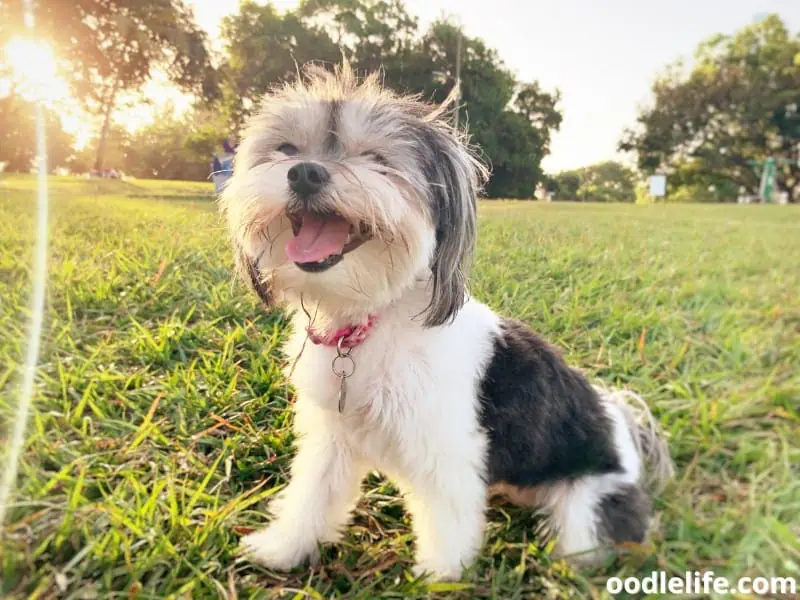
You may notice your pup trying to chomp on everything in sight. This is their way of getting some relief from the discomfort and pressure on their gums.
Another common symptom is excessive drooling. As those new teeth push through, the gums can become tender and produce more saliva than usual. Don’t worry; your Havanese isn’t turning into a drool machine forever!
This will pass once their adult teeth are in place.
Additionally, your puppy’s gums may become inflamed due to the irritation of the growing teeth. It’s normal for the gums to be red, swollen, and sensitive during this stage. However, don’t mistake these symptoms for an excuse to avoid brushing their teeth or providing dental care.
In fact, it’s more important than ever to make sure their oral hygiene is top-notch during teething.
For example, imagine you bumped your elbow and it became swollen and sensitive. This discomfort wouldn’t prevent you from keeping your arm clean, would it? The same principle applies to your Havanese puppy’s mouth during teething.
It’s essential to help your pup through this phase by providing appropriate chew toys to ease their discomfort – think of it as a teething ring for your furry baby. Safe, soft, and durable chew toys can be a lifesaver for your pup and your furniture, shoes, or anything else they might find appealing to gnaw on.
In conclusion, teething can be a challenging time for your Havanese puppy and you, but understanding the signs and discomfort will help you both navigate this phase with more ease. Remember to maintain your patience and provide them with plenty of love and chew toys. This too shall pass, and before you know it, your puppy will proudly show off their dazzling adult smile.
Managing Teething Pain
Teething can be a real pain, both for your Havanese pup and you! Luckily, there are several ways to help ease the discomfort and make this phase a bit more bearable.
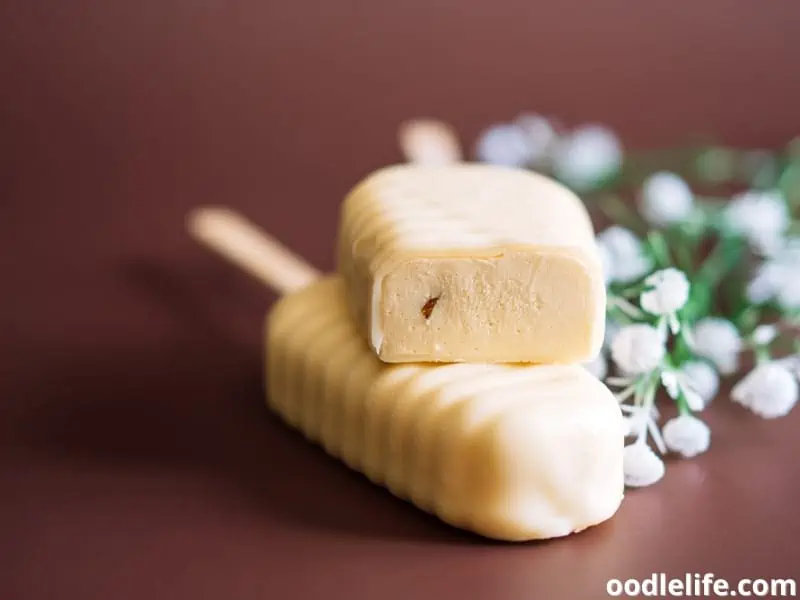
One go-to method for many pet owners is frozen treats. Pop some ice cubes into a freezer-safe container and let your Havanese nibble away. Just be sure they don’t tackle the whole cube at once—it’s the chewing that helps soothe their sore gums.
Besides, an ice cube dispenser ain’t the best toy for your furry friend.
A more savory alternative is frozen dog treats. For the gourmand pup, mix their favorite wet food into an ice cube tray, and freeze for bite-sized portions. Voilà, a perfect, icy à la carte experience!
If picking up frozen bites off the floor isn’t your cup of tea, try chewy toys instead. It’s like giving your doggy their own stress ball—plus, it saves your favorite shoes from becoming collateral damage. Opt for cooling or textured chew toys that also tackle tartar buildup, because who wouldn’t appreciate a multipurpose item?
Lastly, consider incorporating gum massages into your teething toolkit. Gentle pressure helps alleviate soreness and serves as the cherry on top of teething relief. Plus, it’s a great bonding opportunity!
Just make sure you’re gentle with those baby chompers.
Remember, the teething phase, like most good and bad things in life, is temporary. Before you know it, your Havanese will be sporting the brightest smile on the block. Meanwhile, keep calm, freeze on, and remember that laughter is the best medicine (well, after frozen treats, of course)!
Teething Toys and Treats
Havanese puppies, like all pups, go through a teething phase. The good news is there’s a wide variety of teething toys and treats designed to help your furry friend out during this time. Here are some top choices that both you and your Havanese can confidently sink your teeth into:
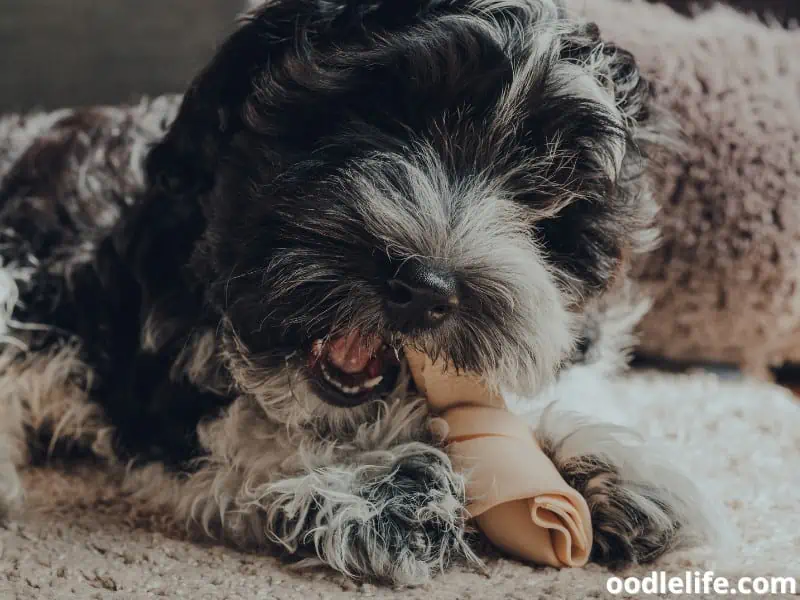
Kong toys are a staple for most dog owners, and teething puppies are no exception. The Kong Puppy Toy is made of a softer material, perfect for those tiny Havanese chompers to gnaw on without damaging their developing teeth. Bonus: you can fill the Kong with treats or peanut butter to keep your pup entertained.
Just make sure that peanut butter is xylitol-free.
Chew toys are essential to help alleviate your pup’s teething discomfort. Nylabone has a wide selection of toys made specifically for teething puppies, featuring various textures that can massage their sore gums and help remove tartar. Choose a Nylabone with a shape and texture that appeals to your Havanese puppy – and you just might save your favorite shoes in the process!
Teething toys with cooling features will be a hit with your Havanese. Some toys can be soaked in water and then frozen, like a puppy popsicle. Be prepared for some epic “brain freeze” moments – your Havanese will undoubtedly make some hilarious faces when they experience the icy sensation for the first time.
Treats also come in handy during the teething phase. There are plenty that have a crunchy texture, encouraging your Havanese to chew and, as a result, relieving some of the teething discomfort. Plus, they’ll be happy to munch on something delicious!
To sum up, remember: variety is the spice of life. Your Havanese will appreciate a mix of toys like a Kong Puppy Toy, chew toys (like Nylabone), and teething toys with various textures and features. Throw in some crunchy treats, and your pup will be too busy enjoying themselves (and their new toys and treats) to nibble on anything else – like your favorite shoes!
Havanese Dental Hygiene
Caring for your Havanese’s dental hygiene is no laughing matter, but you can make it a more enjoyable experience for both of you. If you’re brushing your dog’s teeth for the first time, start by acclimating them to the sensation of having their teeth touched by gently rubbing your finger along their gum line.
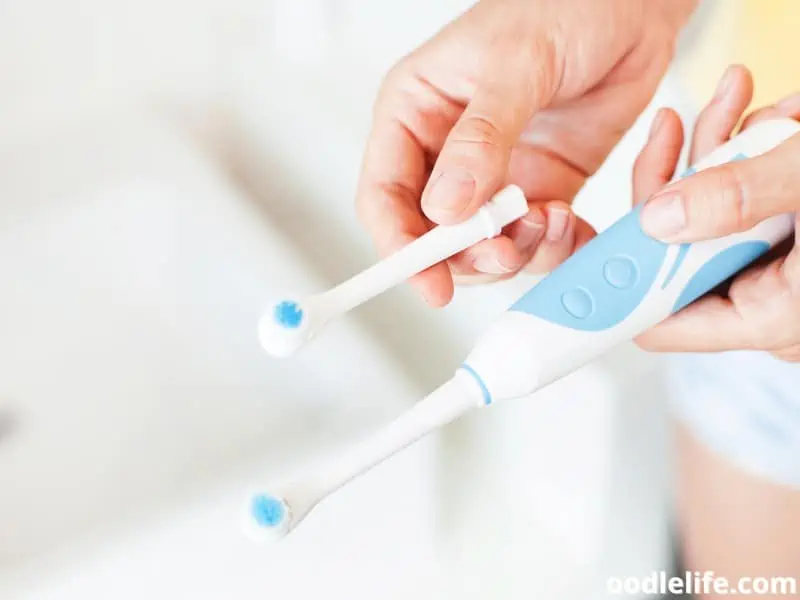
Regular brushing is crucial in preventing plaque and tartar buildup. Get into the habit of brushing your Havanese’s teeth at least two to three times a week. Using a dog-specific toothpaste (avoid human toothpaste – too many selfies!) and a soft-bristled toothbrush, gently brush in a circular motion, providing a gentle massage to their gums.
You might wonder, “Just like humans, do Havanese dogs get periodontal disease?” The answer is yes! If neglected, plaque buildup can lead to periodontal disease, which can cause premature tooth loss and other health complications.
No one wants a toothless, sad Havanese!
Dental chews and toys can help support your dog’s dental hygiene in between brushings. Just make sure you choose ones that are appropriate to your Havanese’s size and never leave them unattended while they chew (just in case they turn into magical dog escape artists).
With proper dental hygiene, your Havanese’s teeth will not only be healthy (and selfie-ready) but will also prevent dental disease and costly veterinarian visits. After all, a clean and healthy mouth is just one more reason to snuggle up with your furry best friend.
Havanese Behavior and Training
The Havanese is an intelligent and sociable breed, known for its cheerful temperament and companionship qualities. As a small dog, this breed is suitable for first-time dog owners and families with kids. Originating from Cuba, the American-bred Havanese is popular due to its hypoallergenic coat and minimal barking tendencies.
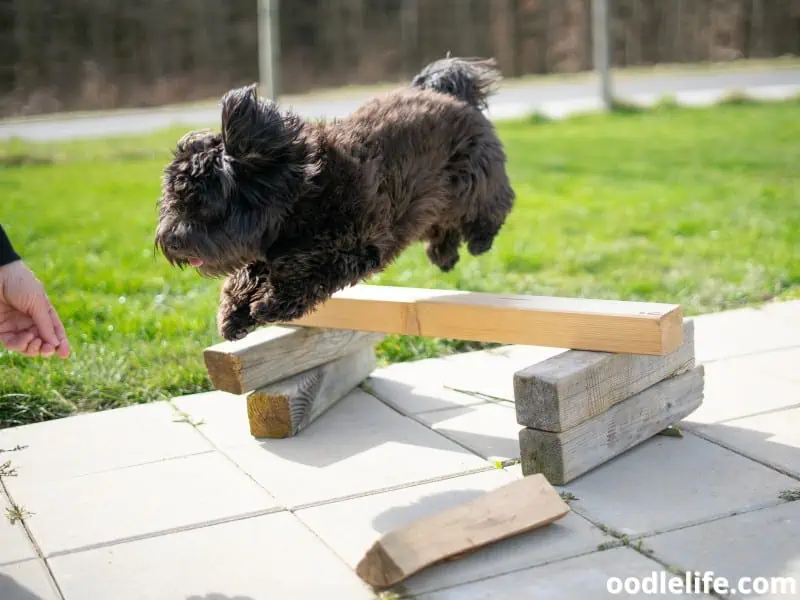
Training a Havanese puppy is generally an enjoyable experience, as they’re eager to learn new tricks and please their owners. However, don’t underestimate the importance of consistent, respect-based training from the start. This will prevent unwanted behaviors as they grow into adult dogs.
Socialization is key for these little companions. Exposing them to various environments, people, and other pets encourages a well-rounded demeanor and reduces potential behavioral issues. It’s essential to begin socializing the Havanese from puppyhood to ensure they mature into adaptable adult dogs.
The teething phase can present some challenges, but with proper training, these issues usually subside. During teething, it’s essential to provide appropriate toys and redirect any unwanted chewing habits onto those toys. A great tip is to have a chew toy on hand when cuddling your Havanese, lest they mistake your fingers for chew toys!
As Havanese dogs are known for their intelligence and agility, they often excel in dog sports. Housebreaking, however, can sometimes be a hurdle. Consistent routines and positive reinforcement are the best approaches for successful housebreaking.
Grooming needs for the Havanese can vary, with some requiring more intensive coat care than others. Regular brushing is essential to prevent matting in their hypoallergenic coats. Consider a trip to a professional groomer to keep your furry friend looking their best.
In summary, the Havanese breed is a wonderful choice for companionship, thanks to its friendly, sociable nature. Proper training and socializing from a young age will ensure they grow up to be well-rounded companions, prepared to take on the world – or at least, your living room.
Other Havanese Concerns
The Havanese, being part of the Bichon family and a toy breed, brings joy to its owners with its friendly and affectionate nature. However, like every breed, it’s essential to be aware of some common concerns to ensure a healthy and happy life.
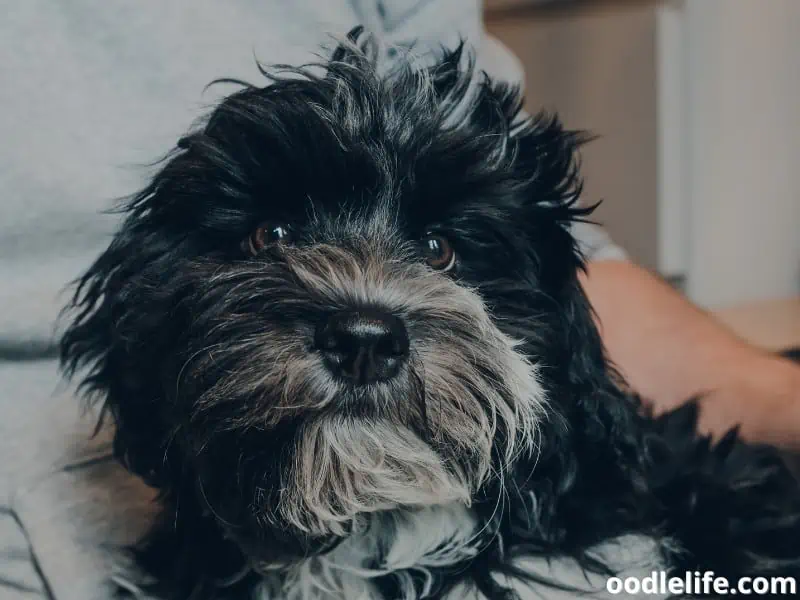
Anxiety and Separation Anxiety: Havanese dogs are known to develop anxiety, especially separation anxiety. They form strong bonds with their owners and may struggle when left alone for extended periods. Make sure to gradually acclimate them to being alone and provide a calm, secure space for them.
Grooming and Coat Care: These dogs are famous for their silky, non-shedding coats. Grooming is vital to avoid matting and maintain their distinctive appearance. Regular brushing and bathing, as well as professional grooming every couple of months, will keep their coat in top shape.
Life Expectancy and Health: The Havanese has a life expectancy of 14-16 years, given proper care and attention to potential health concerns. It’s important to be aware of common issues such as patellar luxation and keep regular vet appointments.
The Havanese and its Bichon Cousins: Sharing similarities with the Bichon Frise and the Maltese, the Havanese stands out with its unique coat and charming personality. It’s interesting to see the similarities and differences between these breeds in terms of appearance, temperament, and health.
Taking care of your Havanese involves addressing these potential concerns with confidence and knowledge. Maintaining a clear and consistent routine will result in a happy, well-adjusted pet. And lastly, keep things light and fun – after all, life is too short to be serious all the time, especially when you have a lovable Havanese by your side.